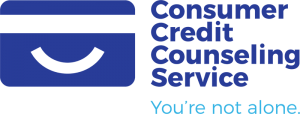Consumer Credit Counseling Service News Articles
Home » News Articles »
Repayment starts as of October 1 for 4.29 million student loan borrowers with federal debt.
It’s been 18 months without a payment. That ends in October – ready or not.
The interest-free federal student loan payment pause, known as forbearance, was extended three times after it initially went into effect in March 2020.
But with payments set to resume in a few months, servicers – the companies that manage student loan payments – are already fielding thousands of calls a day from borrowers seeking student loan help.
Time is running out for both servicers and loan borrowers to prepare for repayment.
Education Secretary Miguel Cardona has indicated that it is not “out of the question” to extend the loan forbearance, borrowers should be prepared for bills to come due sometime in October. (You should be notified 21 days prior to your exact billing date.)
What to do??
TALK WITH YOUR SERVICER NOW
Servicers are expecting borrower demand for help to increase and may have trouble keeping up. The repayment system has never been turned off before, so no one is sure what restarting it simultaneously for 42.9 million people will look like.
If you’re worried about your ability to make payments, there’s no downside to contacting your servicer now to bear the rush. Ask about your best options to manage payments, depending on your situation.
If you don’t know who your servicer is, log in to your My Federal Student Aid account to find out. To ensure you don’t miss any notifications, check that your contact information is up to date on your loan servicer’s website and in your StudentAid.gov profile.
KNOW YOUR REPAYMENT OPTIOS
Your options are not pay or default. There are options in between for lowering payments. Nobody, including the federal government, wants to see you go into default.
Default happens roughly 9 months of late federal loan payments. It will result in a damaged credit score, possible wage garnishment, withheld tax refunds and other financial burdens.
- If payments will be a hardship: Enrolling in an income-driven repayment plan sets payments at a portion of your income, which could be $0 if you’re out of work or underemployed. Or you could opt to pause payments (with interest collecting) using an unemployment deferment or forbearance.
- If you were delinquent before the pause: Your loans will be reset into “good standing”. Making monthly payments on time will help you retain that status. But if you think you might miss a payment or you don’t think you can afford payments altogether, contact your servicer about enrolling in an income-driven plan.
- If you were in default before the pause: Contact your loan servicer or the education department’s default resolution group to find out how to enter into loan rehabilitation and get back into good standing.
FIND A LEGIT RESOURCE
Servicers may be your first point of contact, but they don’t have to be your last. You may have other needs your servicer isn’t providing, such as financial difficulty beyond your student loans or legal advice.
Cash-strapped borrowers can find legitimate student loan help for free with organizations such as The Institute of Student Loan Advisors. Other student loan help, such as credit counselors or a lawyer, may charge fees. You can find reputable credit counselors through organizations such as the National Foundation for Credit Counseling.
Financial planners can also help, but it’s best to look for one with student loan expertise, such as a certified student loan professional.
You can find legal assistance, including advice on debt settlement and pursuing bankruptcy, with lawyers who specialize in student loans or with legal servicers in each state as listed by National Consumer Law Center.
If your issue is with your servicer, contact the Federal Student Loan Ombudsman Group, which resolves federal student aid disputes. You can also file a complaint with the Federal Student Aid Feedback Center or the Consumer Financial Protection Bureau.
AVOID SCAMMERS
Legitimate student loan help organizations won’t seek you out with offers of debt resolution through unsolicited texts, emails or phone calls. Most importantly, you don’t have to pay anyone to apply to consolidate your debt, enter into an income-driven repayment plan or apply for Public Service Loan Forgiveness.
Applying for consolidation and repayment is FREE. When people realize what they can do for free, it makes it easier to spot scams.
Don’t fall for any company that promises to forgive your student loans or wait for the government to do so – thus far, no executive action from President Joe Biden or legislation from Congress has happened.
Excerpted from: Anna Helhoski @NerdWallet
Holli Lewandowski, Certified Credit Counselor, Educator, and Advocate


